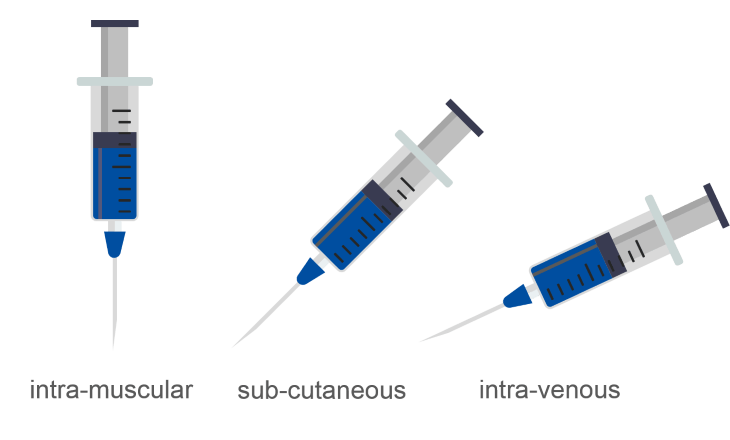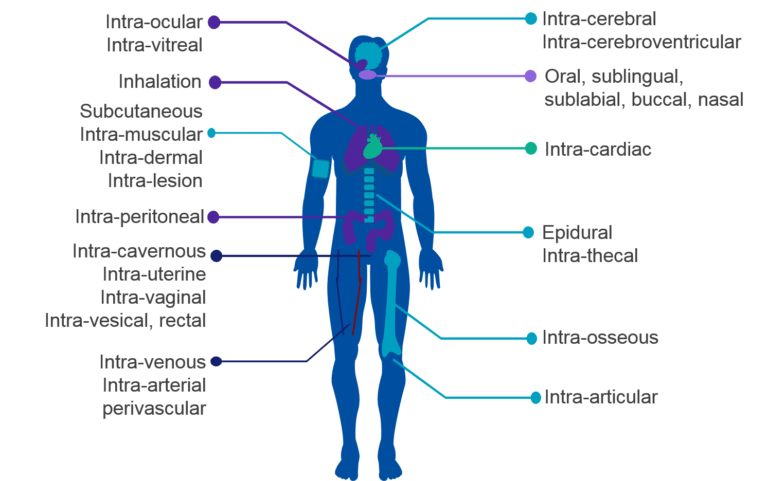Understanding drug delivery routes

Simply put, the process of drug delivery in humans entails introducing medicinal and therapeutic agents into the body. Some primitive examples of drug delivery can be inhaling steam out of a vat of boiling water with herbs to remedy congestion. From this fundamental point, it is essential to understand that advancement in drug delivery mannerisms meant addressing an underlying need for all medical and medicinal processes; consistency and uniformity.
In recent years, intensified research and the development of targeted and potent drugs have made the systems of drug delivery more robust. From the latter part of the eighteenth century, new methods to ease the delivery of medicine have found proliferation: this includes everything from syrups, emulsions, to pre-filled syringes, injector pens, auto-injectors, pumps, and nebulizers.
The Basics of Drug Delivery
Drug delivery methods predominantly rely upon the inherent nature of intended medicinal/therapeutic product, other than this; delivery systems may accommodate for differing medical and physical conditions of patients and users.
Delivery systems revolve around intended medicine, route of administration and medium of administration. They modify and enhance the release quality, absorption and distribution, and eventual elimination to improve overall product safety and efficiency.
These systems are, by definition, heavily reliant on the route of administration. Facilitating optimum and precise drug release by any process (such as by absorption, diffusion or injection), typical routes of administration include oral, transdermal or topical, inhalation, and injection routes.
Understanding the Common Routes
The oral route has been the oldest route of administering therapeutic and medicinal products. Being the most convenient and generally carrying the least financial damage, its popularity is only marred when certain drugs cause undesirable side-effects. These negative externalities can mean anything such as a sore throat or gastrointestinal discomfort.

Parenteral route entails the introduction of medical agents into the recipient body through other routes than oral and more specifically, by-passing the gastrointestinal tract. Usual parenteral routes are sub-cutaneous, intramuscular and intravenous routes, but there others depending on the locality of needed administration of the drug. Being largely more potent and precise in action as compared to oral routes, this usually means faster absorption rates, a missing primary-clearance and sustained release on the target area. Some of its drawbacks include a growing risk of overdose and an increased risk of side-effects caused by wrongful administration.
Inhalation, as its name suggests, mostly ensures the application of the medicinal agent to the lungs. Not only does this facilitate absorption, but it also ensures smart absorption; meaning reduced chances of developing systemic effects by considering the increase in bioavailability of the drug inside the system.
Transdermal or topical relates to the application of medicinal and therapeutic agents on body surfaces such as the skin and the mucous membrane. This route commonly powers local effect rather than fostering systemic internal effect. In some instances, this is considered as the popular choice as it negates the agents’ contact with the liver and gastrointestinal tract if it isn’t required.
Choice of Routes and the way Forward
The choice of routes is heavily governed by the inherent physical and chemical properties of the drug to be administered, the desired site of therapeutic action, requirements about absorption and release rates, effect of metabolism and the overall condition of the patient.
As convenience finds itself prioritized over other largely invasive procedures, drug delivery systems are facing a massive revolution; from heavily relying upon dosages and externally consumable products, the global medical world is shifting towards identifying areas where progress can be achieved. One such example is the prevalence of smart and connected devices currently being introduced to the market as well as of nanotechnology research to empower drug-delivery processes and systems in the not-so-distant future. Targeted drug delivery is a smart and beneficial (to the patient) strategy to move business forward.
Transdermal or topical relates to the application of medicinal and therapeutic agents on body surfaces such as the skin and the mucous membrane. This route commonly powers local effect rather than fostering systemic internal effect. In some instances, this is considered as the popular choice as it negates the agents’ contact with the liver and gastrointestinal tract if it isn’t required.
